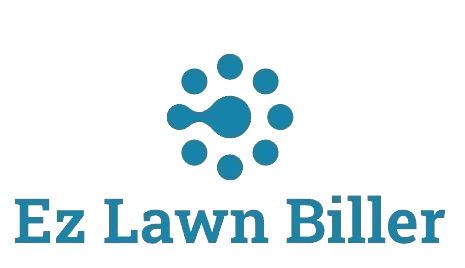Manage Schedules Tips for Lawn Professionals
Managing schedules is a vital aspect of running a successful lawn care business. In an industry that can be heavily influenced by weather conditions and client demands, effective scheduling can mean the difference between success and failure. This blog post delves into practical tips and strategies that lawn professionals can employ to better manage their schedules, thereby enhancing their service delivery and boosting client satisfaction.
As the lawn care industry continues to evolve, professionals must adapt to new ways of managing their time and resources. This includes understanding the importance of scheduling tools, optimizing routes, and implementing effective communication with clients. In this article, we will explore these critical aspects and provide actionable insights that can help lawn professionals streamline their operations.
The Importance of Scheduling in Lawn Care
Scheduling is crucial for lawn care professionals for several reasons. Firstly, it directly impacts productivity. A well-structured schedule allows lawn technicians to maximize their time, ensuring that they complete as many jobs as possible within a day. Studies indicate that businesses with organized scheduling systems report a 20-30% increase in productivity.
Moreover, effective scheduling contributes to enhanced customer satisfaction. When clients know when to expect service, they are more likely to be satisfied with the overall experience. Maintaining a reliable schedule not only fosters trust but also increases the likelihood of repeat business. One powerful tool that can significantly aid in scheduling is lawn billing software. Such software automates scheduling tasks, allowing professionals to focus more on delivering quality service instead of managing appointments.
Clients today expect prompt and efficient service. By managing schedules effectively, lawn care professionals can ensure that they meet these expectations, leading to a more favorable reputation and better client retention rates.
Utilizing Technology for Efficient Scheduling
In this digital age, leveraging technology is essential for streamlining scheduling processes. Lawn service software, like Lawn Biller Software, can automate many scheduling tasks. These programs allow lawn professionals to manage appointments seamlessly, send reminders to clients, and track service history—eliminating the chaos of paper schedules and manual entries.
For instance, automated reminders can help reduce no-shows. By sending reminders via text or email, lawn professionals can ensure that clients are aware of their scheduled appointments. This not only decreases the likelihood of missed appointments but also helps in optimizing the day’s schedule.
Additionally, using a lawn service app on mobile devices enables technicians to access their schedules on the go. This mobility allows professionals to adjust their schedules in real-time, accommodating last-minute requests or cancellations. By prioritizing the use of technology, lawn care businesses can significantly enhance their operational efficiency.
Optimizing Routes for Time Management
Time management is a critical component of effective scheduling. One effective way to save time is by optimizing routes for service calls. Lawn professionals should plan their daily routes based on geographical location to minimize travel time between jobs.
For example, utilizing mapping software can help identify the most efficient route to take. This not only saves fuel costs but also allows more time for completing additional jobs. An optimized route can lead to increased job capacity per day, translating to higher income potential.
Furthermore, lawn service software often includes features that assist in route optimization. These tools may offer real-time traffic updates, allowing professionals to avoid congested areas and ensure timely service delivery. By reducing travel time, lawn care providers can focus more on servicing their clients effectively.
Communicating Effectively with Clients
Effective communication is essential for successful scheduling. Lawn care professionals should maintain open lines of communication with their clients, providing them with updates about their service schedules. This includes notifying clients of any changes or delays due to weather conditions or unforeseen circumstances.
Establishing a communication protocol can enhance client relationships and reduce anxiety about service scheduling. For instance, a simple text or email confirmation of scheduled services can reassure clients that their needs are prioritized. Moreover, using a lawn company app can facilitate communication, allowing clients to reach out easily with questions or requests.
Beyond just confirmations, professionals should also seek feedback from clients on their scheduling experiences. This feedback can provide insights into areas for improvement and help fine-tune the scheduling process, ultimately leading to higher client satisfaction.
Implementing a Routine for Maintenance Tasks
In addition to scheduling client appointments, lawn professionals should also establish a routine for maintenance tasks. Regular maintenance of equipment and tools ensures that everything operates efficiently, reducing downtime during service calls.
Creating a maintenance schedule for lawn mowers, trimmers, and other equipment can prevent unexpected breakdowns. It’s advisable to set aside specific times for maintenance tasks, just as clients are scheduled for lawn services. By treating equipment care as a priority, lawn care professionals can maintain a consistent workflow and avoid disruptions in their service delivery.
Another aspect of routine maintenance is keeping track of seasonal services. Different times of the year may require different lawn care techniques, such as aeration in spring and leaf removal in fall. By scheduling these seasonal tasks into the calendar, lawn care providers can ensure that they meet their clients’ needs at the right time.
Best Practices for Scheduling
To maximize the effectiveness of scheduling practices, lawn care professionals should consider the following best practices. First, it’s essential to prioritize tasks based on urgency and importance. High-priority jobs should be scheduled first, ensuring that critical services are not overlooked.
Secondly, allow for flexibility in scheduling. Life is unpredictable, and clients may need to change their appointments on short notice. By building flexibility into the schedule, lawn professionals can accommodate client requests without significantly disrupting their workflow.
Lastly, it’s beneficial to review the schedule regularly. Regular audits of scheduled services can help identify patterns and areas for improvement. This review process allows lawn professionals to make necessary adjustments, ensuring that they continue to meet their clients’ needs effectively.
Leveraging Client Management Tools
Managing client relationships is integral to successful scheduling. Lawn professionals can benefit immensely from client management tools integrated into their lawn service software. These tools allow professionals to store vital client information, such as service history and preferences.
By having easy access to this information, lawn care providers can tailor their services to better suit individual client needs. For example, if a client prefers bi-weekly mowing services, this can be easily noted in the management system, ensuring that the schedule reflects their preferences.
Additionally, client management tools help streamline billing processes. By automating invoices through the same platform as scheduling, lawn professionals can ensure that billing aligns with service dates, reducing confusion and improving cash flow. The integration of these tools is a game-changer for enhancing overall business efficiency.
Preparing for Seasonal Changes
Lawn care professionals must also prepare for seasonal changes, which can heavily influence scheduling. Different seasons bring different lawn care needs, and understanding these fluctuations is crucial.
During spring, for instance, the focus might shift to fertilization and aeration, while fall may require leaf removal and winter preparation. By anticipating these seasonal demands, lawn professionals can proactively adjust their schedules and communicate these changes to clients.
Additionally, planning for peak seasons can help balance workloads. It may be beneficial to hire seasonal staff during peak times to manage increased demand. By preparing in advance, lawn care providers can ensure they offer consistent service while maintaining high-quality standards.
Conclusion
In conclusion, managing schedules effectively is vital for lawn care professionals seeking to enhance productivity and improve customer satisfaction. By leveraging technology, optimizing routes, and communicating effectively with clients, lawn care businesses can streamline their operations.
It’s essential to implement best practices and actively manage client relationships to ensure a smooth scheduling process. With the right tools and strategies in place, lawn professionals can navigate the challenges of their industry, providing exceptional service and ultimately driving business growth.
As the lawn care industry continues to evolve, staying adaptable and embracing new technologies, such as Lawn Biller Software, will only serve to enhance efficiency and client satisfaction. So, take action today to refine your scheduling practices and watch your business flourish.




